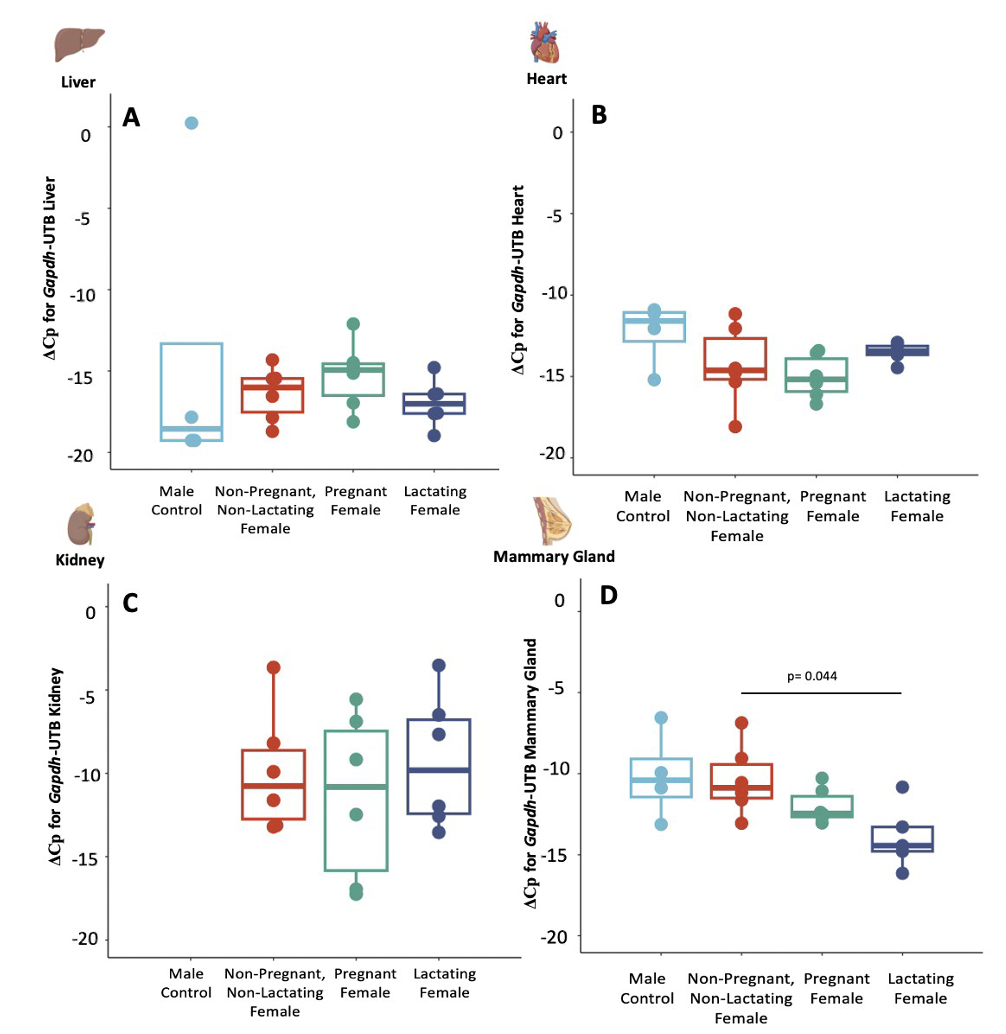Breastfeeding/Human Milk 2
Session: Breastfeeding/Human Milk 2
660 - Variation in Urea Transporter Gene Expression in Females Across Reproductive Stages
Saturday, April 26, 2025
2:30pm - 4:45pm HST
Publication Number: 660.7095
Erica R.. Levin, Rutgers, Robert Wood Johnson Medical School, Pennington, NJ, United States; Liisa Veerus, Rutgers University, Piscataway, NJ, United States; Dareen Shah, Center for Advanced Biotechnology and Medicine, Piscataway, NJ, United States; Margot Shumaker, Rutgers University, Piscataway, NJ, United States; Yue S. Yin, Weill Cornell Medicine, New York, NY, United States; Martin J. Blaser, Rutgers University, New York, NY, United States
.jpg)
Erica R. Levin, MD (she/her/hers)
Pediatric Resident
Rutgers, Robert Wood Johnson Medical School
Pennington, New Jersey, United States
Presenting Author(s)
Background: Urea, toxic to mammals, is found in all mammalian breast milk. The reason for this apparent paradox may be that for urease-positive bacteria present in the newborn gut, urea is a major nitrogen source. Urea is both actively and passively transported across cell membranes. Little is currently known about urea transport in mammary tissue across reproductive stages or how gene expression is regulated. This study explored the expression patterns of two known urea transporter genes, Slc14a1, which transcribes UT-B, and Slc14a2, which transcribes UT-A, in mouse mammary tissue during pregnancy and lactation.
Objective: To quantify the expression of UT-A and UT-B transporters in the mammary glands of C57BL/6N mice. We compared non-pregnant, non-lactating females and males to dams that were pregnant or lactating.
Design/Methods: For this study, we sacrificed male (n=4) control mice as well as non-pregnant, non-lactating (n=6), pregnant (n=6), and lactating (n=6) females. We harvested bilateral cervical, upper thoracic, lower thoracic, abdominal, and inguinal mammary glands, and heart, kidneys, liver, breast milk, and blood for comparative analysis. RNA extraction and cDNA synthesis were completed to perform qPCR analysis for the expression of Slc14a1 and Slc14a2 (urea transporters of interest) and of Gapdh (housekeeping gene).
Results: We report that both UT-A and UT-B are expressed in mammary glands, and that the expression of these two transporter genes changes across reproductive stages. The expression levels of UT-A were highest in lactating mice, followed by pregnant mice, then non-pregnant, non-lactating females, with the lowest expression in male mice (Figure 1). In contrast, the expression of UT-B in mammary tissue was significantly reduced in lactating females (Figure 2).
Conclusion(s): Our findings suggest that UT-A may be the primary urea transporter in breast tissue during pregnancy and lactation. This study has allowed us to take foundational steps toward understanding the role of urea transporter genes in the incorporation of urea into breast milk. Based on our pilot experiment, future work will continue to explore these relationships with additional primers more specific for our genes of interest. The goal is to explore the potential links between milk-associated urea and urease-positive bacteria during the establishment of the early life gut microbiome. Potential downstream applications include improving baby formula to meet the needs of developing infants who are not breastfed.
Relative expression of UT-A gene in four tissues across four reproductive stages
.png) Expression shown as ∆Cp (housekeeping gene - gene of interest) in the liver (A), heart (B), kidney (C), and mammary gland samples (D) collected from male (n=4) and female controls (m=6), and pregnant (n=6) and lactating females (n=6).
Expression shown as ∆Cp (housekeeping gene - gene of interest) in the liver (A), heart (B), kidney (C), and mammary gland samples (D) collected from male (n=4) and female controls (m=6), and pregnant (n=6) and lactating females (n=6).Relative expression of UT-B gene in four tissues across four reproductive stages
 Expression shown as ∆Cp (housekeeping gene - gene of interest) in the liver (A), heart (B), kidney (C), and mammary gland samples (D) collected from male (n=4) and female controls (n=6), and from pregnant (n=6) and lactating females (n=6).
Expression shown as ∆Cp (housekeeping gene - gene of interest) in the liver (A), heart (B), kidney (C), and mammary gland samples (D) collected from male (n=4) and female controls (n=6), and from pregnant (n=6) and lactating females (n=6).
